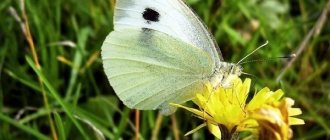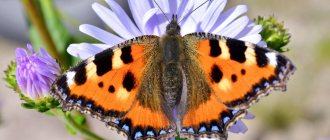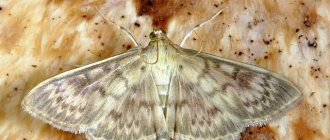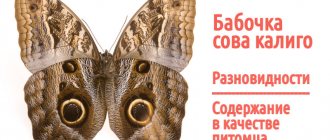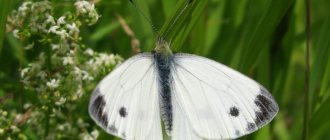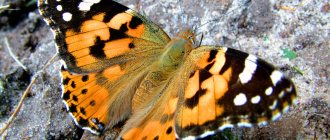One of the most dangerous insects for agriculture, the American white butterfly, which has a distinctive gluttony, does not at first glance look like an insidious pest. But, having gotten to know her better, it will become clear that such an enemy should not be underestimated, so as not to be left without a harvest. A set of measures to exterminate the butterfly will help cope with it if necessary. Fortunately, it doesn't happen very often.
Description
This pest is a polyphage. It vaguely resembles cabbageweed, but it is a nocturnal species, so it is difficult to confuse them. It is distinguished by its small size: only 3-4 cm. The moth is completely white, sometimes with small black spots on the abdomen and wings. The body is covered with thick hair; upon closer examination, the insect can even be called beautiful.
The eggs that the American moth lays (white) are very small - 0.5-0.7 mm, have a characteristic golden or yellow-green color, so it is quite difficult to find them in the foliage.
The caterpillars grow to approximately 3-3.5 cm. The body is velvety brown, speckled with black warts and covered with long hair. On the sides there are longitudinal yellow stripes with orange round growths.
The length of the pupae is 1.-1.5 cm. They can be recognized by their brown cocoon. They always winter at some elevation from the ground, are extremely viable and frost-resistant, and can withstand critical temperature changes. It can pupate anywhere: from a crack in the bark of a tree or a residential building to something forgotten on the street.
The white moth is interesting because in a temperate climate it produces 2 generations per year.
Maliciousness
Caterpillars of the American white butterfly The insect, a caterpillar of the described species, feeds first on the bark of trees, then on other plants. Older individuals are less demanding of the available food.
Under their influence, the bark of trees is damaged and leaves are destroyed. Plants lose their beauty and weaken under the negative influence of the environment. The tree may even die. As a result, the habitat of animals is narrowed, or at least the condition of the habitat deteriorates.
When the leaves are damaged, the yield decreases by more than 75%, which leads to the death of the crop; a person also suffers from direct contact; the caterpillar can cause an allergic reaction.
Why are white moths dangerous?
These pests, oddly enough, are not terrible for cabbage, turnips and other agricultural crops. Therefore, if damage is detected on these plants, you should pay attention to cabbage weeds and whiteweeds.
The butterflies themselves are dangerous precisely because of the clutches of caterpillars that destroy garden crops. They do not cause any other harm, and if there are no cultivated trees and shrubs on the site, you should not be afraid of them.
However, the caterpillar of the American moth is extremely picky in food: it infects more than 250 species of plants, therefore, when planting the same apple tree on your property, you should immediately take measures to prevent the appearance of the pest.
Life cycle
The life of a moth is not very long; a representative of the order Lepidoptera can live from several weeks to 4 months, depending on the species.
Life cycle
Reproduction occurs after mating, since butterflies are heterosexual creatures. An individual goes through several stages of development, each of which is very different from the previous one.
- Larva. The female most often lays eggs directly on food. You can often see eggs laid on the back of plants. The future moth does not remain in this state for long; very soon the larva will move to the next stage of development.
- Caterpillar. The caterpillars that emerge from their eggs cause the most damage; most of them consume plants in huge quantities, thereby causing damage to agriculture.
- Doll. Closer to autumn, the caterpillar wraps itself in a cocoon, in which it will spend the winter. It is hibernation in this position that contributes to the miraculous transformation of a multi-legged caterpillar into a full-fledged butterfly.
- Imago. In early spring, as soon as the sun warms up, the cocoon begins to burst and a moth emerges from it. He will not be able to fly right away; his wings are very fragile and dry. After some time, the required amount of moisture will reach them, and the butterfly will be able to take off to continue its lineage.
What happens to the affected culture?
The leaf and branch on which the white night moth has laid eggs, after the appearance of the caterpillars, are slowly covered with viscous translucent threads, similar in appearance to a cobweb. Over time, entire colonies colonize the garden crop on the site, causing cocoons of cobwebs to form on the plant.
When severely damaged, trees do not overwinter well and often freeze out, causing them to lose their ability to bear fruit or die altogether. Everything is aggravated by the fact that after two months of parasitism on the plant, the caterpillars pupate again and in early August the white moth, the photo from which you see in the article, goes in a second wave to garden crops that have already been damaged and not yet affected by the pest. If no measures are taken, this process will be virtually endless and will serve to spread the American moth to many hectares around.
Appearance
The moth insect belongs to the Lepidoptera and is on the same level as butterflies. In scientific terminology, all small butterflies are classified as moths. Externally, these two representatives of insects are very similar:
- Each of them has an elongated, spindle-shaped body. Only in the moth it is covered with a large number of hairs.
- There are always two pairs of wings, the first pair is slightly better developed. They usually have a protective color, with dark colors predominating in moths.
- Three pairs of legs help the insect move without the help of wings.
- On the round head there are antennae, which are thickened at the very beginning and are abundantly covered with hairs.
On a note!
A photo of moths shows that they are almost completely covered with hairs, through which they perceive the environment. They are especially sensitive on the antennae; the higher the hairiness, the better the butterfly orients itself in space.
Where did this pest come from?
This scourge came from North America, from where it began to rapidly spread across the globe. Two factors play in its favor: the insect’s excellent adaptation to almost any conditions and the people themselves. The white moth has no natural enemies; due to its numbers and rate of expansion (up to 40 km of new territory per year), it displaces native phytophagous pests.
People are guilty of their negligence. They abandon garden plots and vineyards, leave untreated growth along the roads and do not carry out any mass quarantine measures, creating ideal conditions for insect reproduction. This not very large white moth is capable of ruining many years of gardener’s work in just a year, not to mention free vegetation, without which people will have a hard time in the polluted areas of various cities.
Fighting methods
As with any other pest, control measures begin with safe methods. The first and most important thing is to prevent the appearance of a large number of pests. It is necessary to inspect the plantings and tear off any nests of pests to destroy them.
Chemical
Dangerous drugs help quickly destroy harmful insects. But they will kill all living creatures, even useful ones. It must be used according to the instructions, observing the dosage.
Folk
The measures are safer and more gentle. But they require several times and will not be effective for mass distribution. Simple recipes are inexpensive.
Among the gardener's tips, everyone will find one that will be suitable for protecting the garden from the white butterfly.
Reasons for appearance
Many people wonder where food moths come from in a house where regular cleaning is carried out. She cannot accidentally get into the apartment from the street, since she is not capable of flying that well. Those butterflies that flutter indoors are males. Female moths move much more slowly, mostly hopping from place to place. Therefore, even if a male individual has flown into a dwelling, it will not be able to reproduce without a female one.
Inside the bags there are already eggs or moth caterpillars, which then spread throughout the apartment. They get there through cuts, tears, punctures in the packaging or during packaging of goods at the factory.
Comfortable conditions for the reproduction of food moths are a temperature of 22...25°C and air humidity above 60%.
How to fight?
So far, there are 2 areas of struggle:
- Use of chemicals;
- Inspection of the area where the pest is believed to be located and its destruction.
The second method is suitable if the area of the site is small, when it is possible to conduct a survey.
The examination is carried out at least once a week; it is not difficult to identify problem leaves: they darken, their edges curl up, as if they are drying up.
It is better to carry out removal in the late afternoon, before dark, by which time the insects gather in their nests. By removing a few leaves, you can get rid of an entire colony. The problem should be solved immediately, before the caterpillars turn into butterflies.
Different preparations are required, depending on what type of plant it is used on and what the characteristics of the soil are.
For example , drugs containing a virus that cause granulosis and nuclear polyhedrosis are used. Their value lies in the fact that insects, in contact with other individuals, spread the disease. Approximately 1/3 of the population dies, the remaining part behaves sluggishly, and the harm from it decreases. In addition, the virus is transmitted to offspring, which encourages developers, because it inhibits the spread of insects.
What can be said about chemicals? Their list is huge, some are suitable for getting rid of various parasites and unwanted guests, others are aimed exclusively against the white butterfly:
- Chlorophos;
- Entobacterin;
- Sevin;
- Rogor;
- Pirinex 40;
- Karbofos;
- Zolon;
- Antio.
Karfbofos, for example, acts on different types of pests, its effect is universal. Antio is also a powerful drug, but its use is harmful to both pets and people.
Research continues, with their help agronomists hope to learn about the pest’s weak points and develop more effective methods.
The problem remains of balancing the use of chemicals and maintaining the purity of products from chemical exposure. It's no secret that insecticides affect people and animals. The presence of chemicals cannot in principle be called normal. After getting rid of an insect, you can become poisoned by the fruits of a tree or plant.
Literature
- Bulyginskaya M.A., Shamshev I.V. Sem. Arctiidae. / Insects and mites - pests of agricultural crops (ed. Kuznetsov V.I.). T. 3, part 2. Lepidoptera. St. Petersburg: Nauka, 1999. pp. 320-331.
- Vasiliev V.P., Livshits I.Z. Pests of fruit crops. M.: Kolos, 1984. 399 p.
- Shutova N.N., Smetnik A.I. Quarantine pests, plant diseases and weeds. / Plant quarantine in the USSR (ed. Shamonin A.I., Smetnik A.I.). M.: Agropomizdat, 1986. P. 143-248.
Wikimedia Foundation. 2010.
See what “American white butterfly” is in other dictionaries:
- Butterfly of the bear family, a quarantine pest of fruit crops in the North. America and Europe. The wings are snow-white, often with dark spots. Feeds (caterpillars) on leaves, entangles branches with a web ... Big Encyclopedic Dictionary
— (Hyphantria cunea) butterfly of the bear family. The wingspan is 20-35 mm, snow-white, often with dark spots. Caterpillar 25-35 mm long, velvety brown on top with black warts and long hairs, lemon yellow on the sides... ... Great Soviet Encyclopedia
American white butterfly
— Table 29. Pests of fruit and berry crops: 1 — common hawthorn (a — butterfly, b — caterpillar); 2 - gypsy moth (a - female, b - male, c - caterpillar); 3 - ringed silkworm (a - ... ... Agriculture. Large encyclopedic dictionary
A butterfly of the bear family, a quarantine pest of fruit crops in North America and Europe. The wings are snow-white, often with dark spots. Feeds (caterpillars) on leaves and entangles branches in a web. * * * AMERICAN WHITE BUTTERFLY AMERICAN... ... Encyclopedic Dictionary
Butterfly fam. bears, quarantine pest fruit. crops in the North America and Europe. The wings are snow-white, often with dark spots. Feeds (caterpillars) on leaves, entangles branches with a web... Natural history. encyclopedic Dictionary
AMERICAN WHITE BUTTERFLY
— (Hyphantria cunea), butterfly of the bear family, pest of many. (over 200) species of plants, especially mulberries and fruit trees. It entered Europe from the North. America in 1940, in the USSR in 1952 (Transcarpathian region). Object of external and internal quarantine. Wings in span... ... Agricultural encyclopedic dictionary
HYPHANTRIA CUNEA DRURY. — AMERICAN WHITE BUTTERFLY
— see Hyphantria cunea Drury. American white butterfly. A butterfly with a wingspan of about 40 mm. The head, chest, abdomen and wings are snow-white. The front wings are often with numerous or sparse black dots, the hind wings are plain white. Egg… …
HYPHANTRIA CUNEA DRURY - AMERICAN WHITE BUTTERFLY
- see Hyphantria cunea Drury American white butterfly. The quarantine object damages about 300 tree, shrub and herbaceous plants, and the preferred crops are mulberry, ash-leaved maple, and all fruit and ornamental crops. On... ...Insects - agricultural pests of the Far East
Goldfish “Butterfly” (calico variety) Jikin butterfly (Japanese ... Wikipedia
— “Shishi Gashira” on a 19th century postcard from the series “Goldfish in Japanese Culture” by Shinnosuke Matsubara... Wikipedia
This year we have some kind of misfortune in the garden. Out of nowhere, a caterpillar appeared and ate all the leaves on the pear, quince, cherry and plum. We saw the same caterpillars in a forest plantation not far from our site. These caterpillars live in webs in many pieces and simply skeletonize trees. Tell me what kind of pest it is and how to fight it?
Dmitry Gromov
Ethics question
Sometimes these insects start on their own, without invitation: they simply fly into an open window. If you release a butterfly, it will spend its short life in the wild. But it is likely that in 5 minutes a bird will eat it. According to experts, by leaving the butterfly at home and providing it with decent care, a person can extend the life of this insect.
In addition, today many people breed tropical butterflies for commercial purposes, selling them for festive events. However, the process is expensive and quite labor-intensive.
Therefore, there is nothing wrong or strange in bringing an insect that has flown into the house from the street or sheltering it and creating suitable conditions for its existence.
We'll look at how to care for temperate butterflies, such as the extremely common butterfly, peacock's eye, burdock, mourning and admiral's butterflies.
Fur coat
This variety can ruin an expensive natural fur coat in a short time. Butterflies have shiny dark wings with black dots, their wingspan is from 14 to 15 mm. The white larvae look like worms.
The fur moth feeds on clothing made from natural materials. With sharp jaws, like scissors, the caterpillars trim the wool on fur products, grind it and eat it. To get from the feeding site to the nest, they cut winding tunnels. In this way, numerous tracks of trimmed fur are formed on a fur coat or hat.
What harm does it cause to plants?
This polyphagous pest causes damage to more than 200 species of fruit trees and shrubs. He is especially popular with:
- mulberry;
- nut;
- Apple tree;
- pear;
- plum;
- cherry;
- cherries;
- quince;
- apricot;
- peach;
- rose hip.
The damage to trees caused by the butterfly is that:
- Only the newly hatched caterpillars immediately begin to eat the fleshy part of the leaf, leaving only a skeleton of veins. Older individuals eat the entire leaf.
- In the process of life, living in colonies, they form a nest, entwining entire branches, or even the entire tree, with cobwebs.
- The second generation of caterpillars, which is even more numerous, eats fruit crops until autumn.
- Another danger is that these lepidopterans are spreading around the world at tremendous speed, destroying an increasing number of green spaces. And they do this not thanks to their small wings, but by moving in packaging containers, in planting material, in boxes of fruit.
On trees damaged by caterpillars, wood growth slows down.
Metabolic processes in plants are disrupted and protective functions are weakened. As a result of damage, trees may not tolerate frost and die or produce poor yields for several years.


